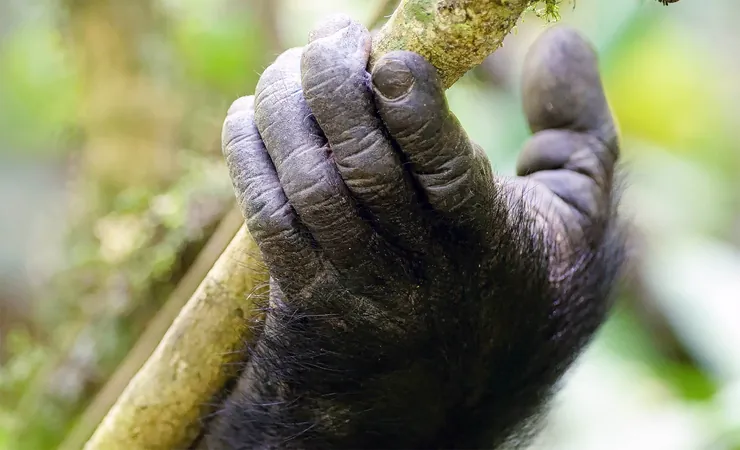
Unlocking Evolution: How Thumbs and Brains Grew Together in Primates
2025-09-01
Author: Rajesh
A Surprising Link Between Thumbs and Intelligence
Did you know that the evolution of primate thumbs is closely tied to brain size? Researchers are now unveiling that longer thumbs not only enhance climbing skills but also point to an intriguing connection between physical dexterity and cognitive development.
The Evolutionary Dance of Dexterity and Cognition
Led by Dr. Joanna Baker from the University of Reading, a groundbreaking study has revealed that as primates evolved, their thumb length increased in tandem with brain size. This relationship points to the outer brain regions as essential contributors to this evolution, suggesting that our hands and minds expanded together.
Why Longer Thumbs Matter
Longer thumbs enhance grip and manual dexterity, enabling precise control for handling objects. This skill is crucial for tool use, food processing, and daily tasks. Dr. Baker stated, “We’ve always known that our big brains and nimble fingers set us apart, but now we can see they didn’t evolve separately.” The study connects hand skills to the energy costs associated with developing complex neural tissue over time.
The Research Behind the Findings
The research team investigated the first and second metacarpal bones in both living species and fossils. By analyzing a total of 95 primate species, they found a consistent relationship between thumb length and brain size across the primate family tree.
A Surprising Twist: Brain Regions Revealed
Interestingly, instead of finding a correlation with the cerebellum, which controls motor coordination, the study identified a link with the neocortex. This area of the brain plays a pivotal role in sensation, planning, and fine motor control, indicating that increased thumb length correlates with enhanced cognitive abilities.
Beyond Tool Use: A Complex Relationship
Tool use in primates is not a simple trait; it's influenced by their environment and learning experiences. For instance, capuchin monkeys have been seen adjusting their stone tools based on nut properties, highlighting the complexity of their behaviors.
Insights for Future Research
The findings illuminate a broader understanding that as primate species developed better fine motor skills, they also expanded their brain networks to match these demands. The study lays a foundation for future research on how anatomical features and neural systems interact in different species.
Conclusion: A Deep Connection Unveiled
Ultimately, this research suggests a profound synergy between hand dexterity and cognitive evolution—a relationship that transcends tool use alone. The study opens new avenues for understanding the evolutionary pathways of our own species and its ancestors.
Discover More
For those intrigued by the evolution of primates, this study is a must-read. Published in Communications Biology, it promises to reshape our understanding of how physical and cognitive traits co-evolved over time.

 Brasil (PT)
Brasil (PT)
 Canada (EN)
Canada (EN)
 Chile (ES)
Chile (ES)
 Česko (CS)
Česko (CS)
 대한민국 (KO)
대한민국 (KO)
 España (ES)
España (ES)
 France (FR)
France (FR)
 Hong Kong (EN)
Hong Kong (EN)
 Italia (IT)
Italia (IT)
 日本 (JA)
日本 (JA)
 Magyarország (HU)
Magyarország (HU)
 Norge (NO)
Norge (NO)
 Polska (PL)
Polska (PL)
 Schweiz (DE)
Schweiz (DE)
 Singapore (EN)
Singapore (EN)
 Sverige (SV)
Sverige (SV)
 Suomi (FI)
Suomi (FI)
 Türkiye (TR)
Türkiye (TR)
 الإمارات العربية المتحدة (AR)
الإمارات العربية المتحدة (AR)